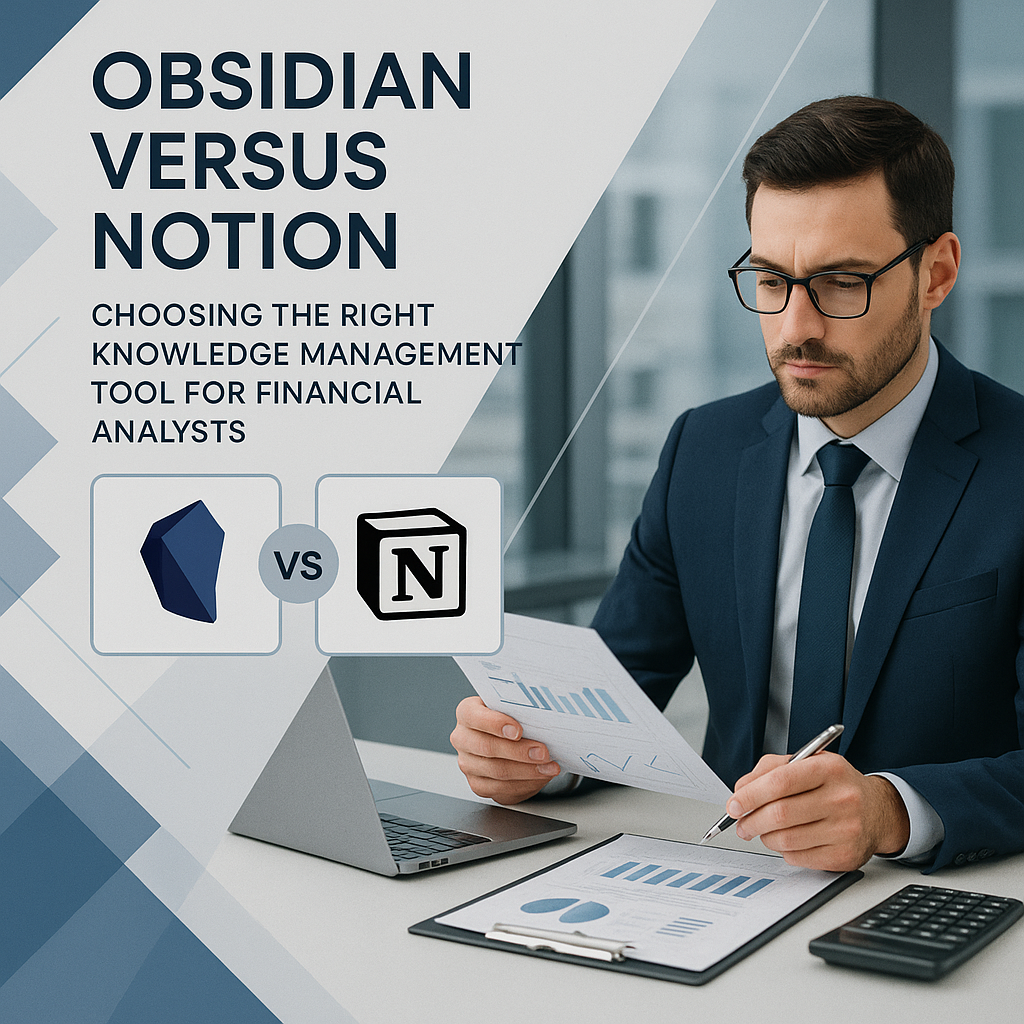
Table of Contents
The Analyst’s Dilemma: Structuring Financial Knowledge
Financial professionals swim in a sea of data, research, regulations, and meeting notes. Effectively managing this diverse information is paramount for insightful analysis and timely decision-making. While traditional methods like spreadsheets or simple document folders exist, dedicated knowledge management tools offer significantly more power. My research into productivity stacks, as touched upon in a previous post on optimizing workflows, reveals two prominent contenders gaining traction: Obsidian and Notion. But which one truly fits the analytical mind?
Both platforms promise to centralize notes and connect ideas, yet their underlying philosophies and features create distinct user experiences, particularly relevant for the structured yet interconnected nature of financial work. Let’s break down their core differences from an analyst’s perspective.
Obsidian: The Networked Thought Processor
Obsidian operates on a collection of local Markdown files. Its strength lies in its powerful bidirectional linking and graph visualization. Think of it as a personal wiki where ideas fluidly connect.
- Data Structure: Primarily non-hierarchical. Links create the structure organically. While folders exist, the emphasis is on connections between notes (e.g., linking a company analysis note to notes on specific financial reports, industry trends, and relevant regulations).
- Offline Access: Because files are stored locally, Obsidian works flawlessly offline (a critical feature for secure environments or travel).
- Customization: Highly extensible through community plugins. You can tailor it precisely to your workflow, adding features like Kanban boards, calendar integration, or advanced querying.
- Data Ownership & Security: You own your data directly (plain text files). This offers greater control and privacy compared to cloud-centric platforms.
- Learning Curve: Can feel steeper initially, requiring users to understand Markdown and embrace the networked thought concept.
For analysts who thrive on connecting disparate pieces of information, spotting patterns, and building a personal knowledge graph over time, Obsidian offers unparalleled flexibility. It’s like building your own custom research database.
Notion: The All-in-One Workspace
Notion presents a more structured, visually oriented approach. It combines notes, databases, Kanban boards, calendars, and more into a single, integrated online workspace.
- Data Structure: Hierarchical and database-driven. Pages can contain databases (think powerful spreadsheets) with various properties (tags, dates, relations). This excels at organizing structured information like tracking investment pipelines, managing compliance checklists, or building project dashboards.
- Collaboration: Built for teamwork. Sharing pages or entire workspaces is straightforward, making it suitable for finance teams needing shared resources or project tracking.
- Ease of Use: Generally considered more intuitive for beginners, with a polished user interface and less reliance on markup languages.
- Offline Access: Limited. While some caching occurs, full functionality relies on an internet connection.
- Templates: A vast library of pre-built templates can accelerate setup for common use cases (meeting notes, CRM, project management).
Notion shines for structured data management and team collaboration. If your primary need involves organizing datasets, managing projects with clear stages, or creating shared team dashboards, Notion’s integrated toolkit is compelling. It’s like having a Swiss Army knife for information organization.
Making the Choice: Workflow Matters Most
Neither tool is universally “better”; the optimal choice depends entirely on the analyst’s specific workflow and preferences.
- Choose Obsidian if: You prioritize non-linear thinking, deep information linking, data ownership, offline access, and extensive customization. Your focus is building a personal, interconnected knowledge base.
- Choose Notion if: You need strong structured data capabilities (databases), seamless team collaboration, a lower initial learning curve, and a wide array of built-in tools within a single platform.
My analysis suggests many financial professionals might even benefit from using both: Notion for team collaboration and structured project data, and Obsidian for personal research, deep analysis, and networked note-taking. The key is understanding how you work best with information.
Implementation Considerations for Finance Teams
When selecting knowledge management tools for financial organizations, several factors merit consideration. Security requirements often favor on-premises solutions or cloud platforms with robust compliance certifications. Integration capabilities with existing financial systems (ERPs, BI tools) can significantly impact workflow efficiency.
Training and adoption timelines differ markedly: Notion typically requires less initial investment, while Obsidian’s learning curve may delay productivity gains. Total cost of ownership includes not just licensing but also training, customization, and ongoing management resources.
Data portability should also be evaluated. Understanding how to extract and migrate knowledge if platform needs change ensures long-term flexibility and reduces vendor lock-in risks.
What tools form the core of your financial knowledge management system? Let’s discuss the nuances. Connect with me on LinkedIn to share your approach.